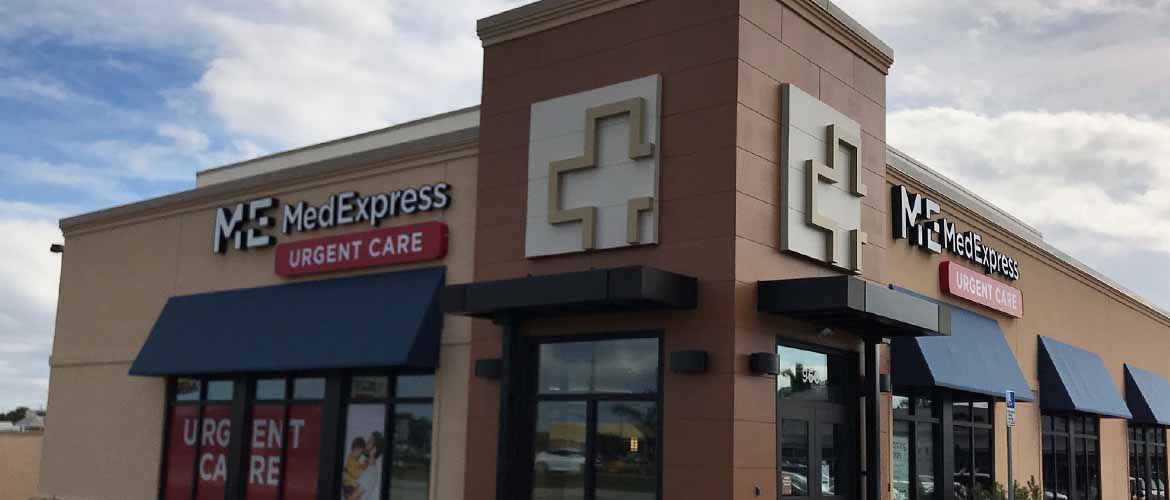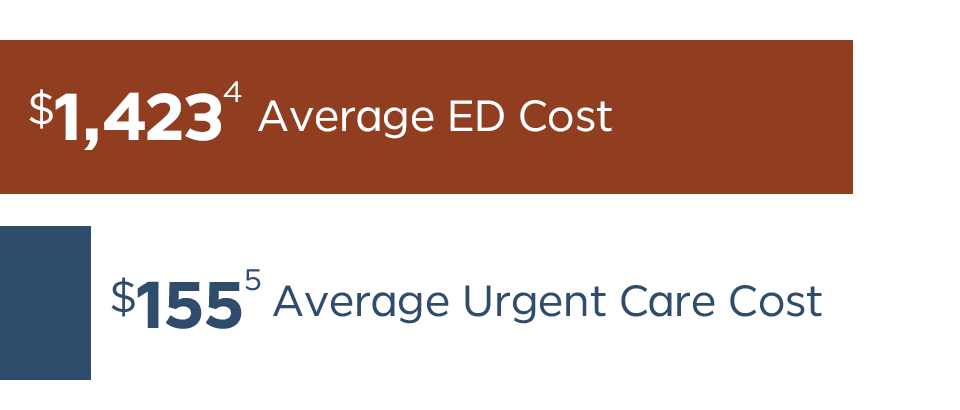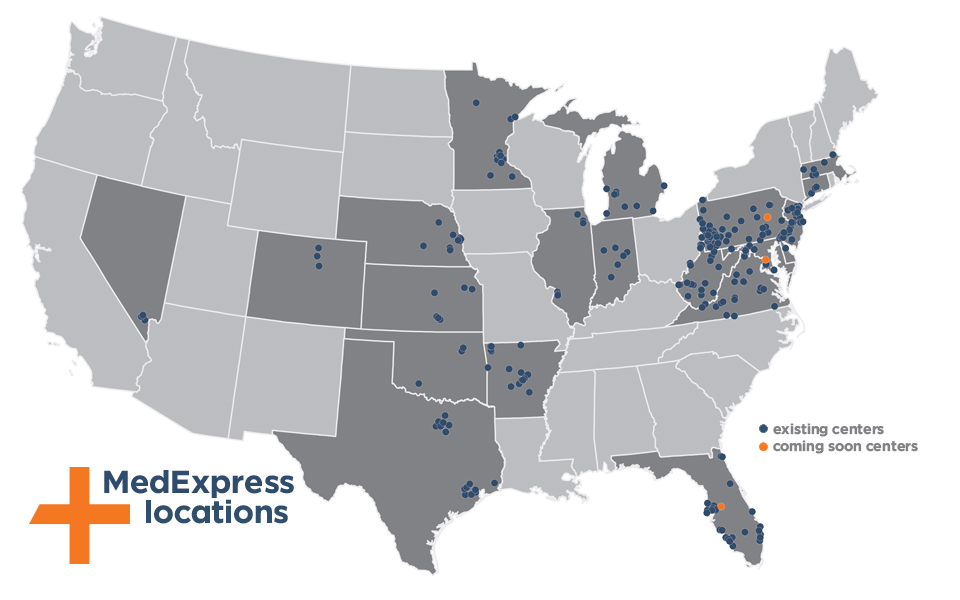Stats on Emergency Department Use
ED overcrowding and overuse continues to be a problem in the United States, with more than 43 visits per 100 people in 2015.1 Although national data show a promising decline in ED use between 2014 and 2015 – from 141.1 million visits to 136.9 million visits – there has been a marked increase in non-urgent and semi-urgent visits.2
Non-urgent visits increased from 4.3 percent of all visits in 2014 to 5.5 percent in 2015; semi-urgent visits increased from 24.6 percent in 2014 to 26.1 percent in 2015.3
Appropriate Care in the Right Place

MedExpress can be your partner in ED diversion initiatives. With our advanced offerings and full medical team on site, we’re available to treat non-emergent, non-life-threatening conditions at a fraction of the cost of the ED. Couple that with our convenient hours and locations and you have a recipe for ED diversion success.

Advanced Offerings
- Digital X-rays with X-ray technologists on site.
- Treatment for breaks, sprains, and strains.
- Wound treatment, including stitches and minor surgical procedures.
- Laboratory testing and EKGs.
Accessibility and Convenience
- More than 145 centers located in 10 states.
- Open 8 to 8 every day, including weekends.
- No appointments necessary.
- Easy to access and free parking.
High Patient Satisfaction
- Average Net Promoter Score of 70
- High return rates – approximately 65 percent of our patients have visited MedExpress before.
- Patient-centered care in a warm, welcoming environment.
- Coordination of appropriate follow-up care and collaboration with local providers.
Ways We Can Help You
There are a number of ways we can work with you to meet your ED diversion needs. From awareness campaigns to market-based collaborations, our partnership extends beyond just care delivery.
Existing MedExpress Patients
Patients are already choosing MedExpress over the ED when they have the option. According to MedExpress patient survey results, 22 percent of patients in 2018 selected the ED among the places they would have gone if they had not visited MedExpress.6
Targeted Education and Awareness Campaigns
With targeted education and awareness campaigns, patients are able to better choose the appropriate setting for their healthcare needs. For example, a national-level payer found that educational communications helped reduce inappropriate ED use.7 Their initiative resulted in a 50 percent reduction in ED use and a 67 percent increase in urgent care use for the populations who received their mailers.
Collaborations with Health Systems
Not only do educational campaigns prove promising, but so do collaborations within the health system. For example, MedExpress partnered with a large-scale primary care provider (PCP) network in Florida to implement a formal ED diversion program. The PCPs across 12 areas referred patients to 19 MedExpress centers for after-hours and episodic care.
The results of this partnership: Approximately 85 percent of the PCP’s patients seen at MedExpress could have chosen to go to the ED based on the time of visit and their acuity (higher-level need than PCP offerings, but not life-threatening). This has yielded $2M of annualized savings.
Planning an ED Diversion Program
Reducing the unnecessary use of the ED benefits everyone – from patients to health systems to payers. MedExpress can play a role in reducing ED overuse by offering a more appropriate setting for the right care at a lower cost.
let's talk
For more information, please contact us.
Sources:
1 U.S. Department of Health and Human Services. 2014 Annual Report on the Quality of Care for Children in Medicaid and CHIP. Last updated November 2014. Accessed December 19, 2018.
1 Centers for Disease Control and Prevention. FastStats: Emergency Department Visits. Published January 19, 2017. Accessed April 17, 2019.
2 U.S. Department of Health and Human Services. National Hospital Ambulatory Medical Care Survey: 2015 Emergency Department Summary Tables. Published April 2018. Accessed April 17, 2019.
3 Ibid.
4 U.S. Department of Health and Human Services. Agency for Healthcare Research and Quality: Medical Expenditure Panel Survey 2013. Published May 2016. Accessed April 17, 2019.
5 Urgent Care Association. Benchmarking Report, 2011.
6 Survey conducted by Press Gainey. Results based on patient survey responses from January 1 through December 31, 2018.
7 UnitedHealthcare. Decline in Use of Emergency Room Slows; Costs Continue to Rise. Published July 9, 2018. Accessed April 17, 2019.

